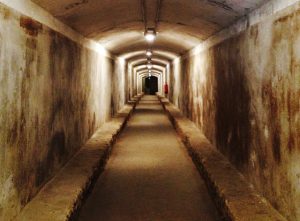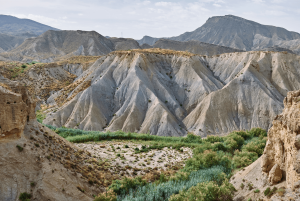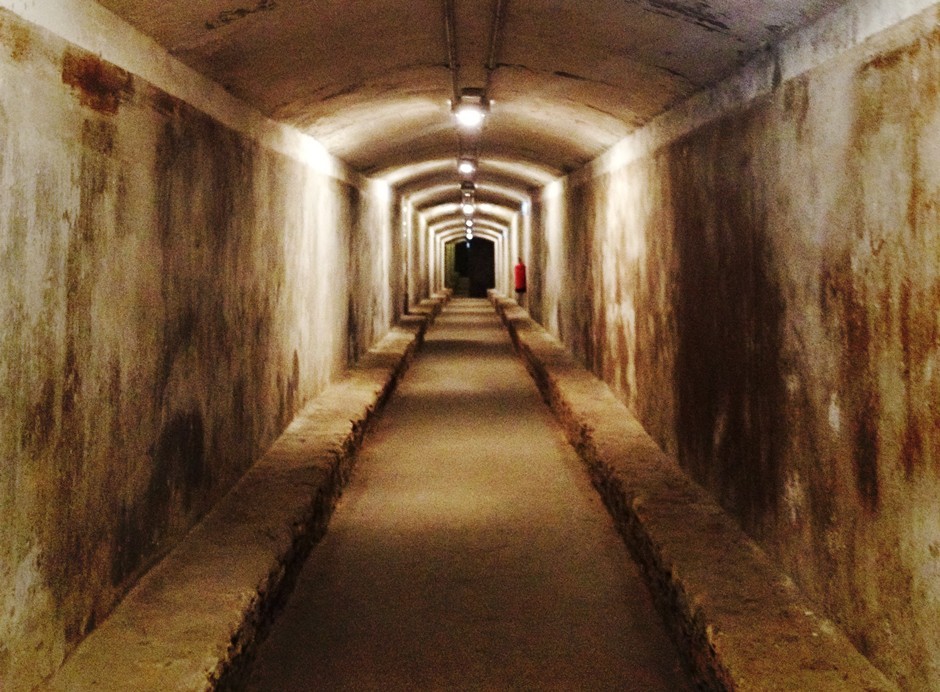Hidden Gems of Almería: 5 Secret Places to Visit
Introduction
Almería is known for its sun-soaked beaches, ancient fortress, and vibrant tapas culture—but beyond the usual tourist routes lies a treasure trove of hidden gems waiting to be discovered. For travelers looking to go beyond the guidebook, Almería offers a surprising number of secret spots steeped in history, beauty, and authenticity.
In this guide, we uncover five of the most fascinating hidden places in Almería: from underground wartime tunnels and forgotten film sets, to colorful local neighborhoods and secluded beaches you’ll have all to yourself. These locations may not appear on every map, but they hold the key to understanding Almería’s unique character and cultural richness.
If you’re the kind of traveler who loves to explore off the beaten path, escape the crowds, and uncover stories most visitors miss—this guide is for you. Let’s dive into the secret side of Almería.
1. Casa del Cine: Almería’s Forgotten Film History

Why This Museum Is a Hidden Cultural Treasure
Almería has played a surprising role in international cinema, serving as the backdrop for dozens of Westerns, historical dramas, and even science fiction films. At the heart of this cinematic history is the Casa del Cine, a little-known museum located in a restored 19th-century villa.
Far from a traditional tourist attraction, this site offers a deep dive into Almería’s past as a Hollywood stand-in, with immersive exhibitions, behind-the-scenes stories, and authentic film props. It’s a true cultural gem for movie lovers and curious travelers alike.
The museum is rarely crowded, allowing visitors to explore at their own pace and connect personally with the stories and legends preserved within its walls.
Inside the House: John Lennon and Cinematic Legends
One of the most fascinating facts about Casa del Cine is that John Lennon lived here in 1966 while filming the movie How I Won the War. It was during his stay in this very house that he began writing the iconic song “Strawberry Fields Forever.”
Inside, you’ll find rooms dedicated to Lennon’s stay, along with exhibits on directors like Sergio Leone and Ridley Scott, who brought their visions to life using Almería’s unique desert and coastal landscapes. Costumes, storyboards, and projection rooms give you a glimpse into the golden era of filmmaking in the region.
Few people know how deep Almería’s ties to international cinema run—and Casa del Cine brings this history to life in a wonderfully personal way.
Visitor Tips and How to Get There
- 📍 Located in the Villa de Don Antonio, just 10 minutes by taxi from Almería city center.
- 🕒 Open Tuesday to Sunday; closed Mondays. Check updated hours before visiting.
- 🎟️ Entrance is under €5, with discounts available for students and seniors.
- 💡 Guided tours available in English upon request—worth it for deeper insight!
2. Civil War Shelters: Underground Secrets of the City

The History Behind the Shelters
Beneath the streets of Almería lies one of the most surprising and moving hidden places in the city: the Refugios de la Guerra Civil—a 4.5 km network of underground air-raid shelters built to protect civilians during the Spanish Civil War.
These tunnels were constructed between 1937 and 1938 and could hold over 40,000 people. At a time when Almería was under constant threat of aerial bombardment, these shelters were a literal lifeline for the city’s residents.
Today, a portion of the shelters is open to the public, offering a unique window into one of the most turbulent periods in modern Spanish history.
What You’ll Discover on the Tour
The guided tour takes you through a restored section of the tunnels, where you’ll find:
- Original benches, walls, and lighting preserved to show how they were used.
- A reconstructed surgery room that was used during air raids.
- Exhibits on civilian life, air-raid protocols, and survival stories.
It’s a deeply emotional and educational experience that few tourists ever discover.
Booking Information and Practical Advice
- 🎟️ Entry is by guided tour only. Book in advance through the official tourism website.
- 🕒 Tours last around 45 minutes and are available in Spanish and English.
- 💡 The tunnels are cool year-round, so bring a light jacket—even in summer.
- 📷 Photography is limited; check rules with your guide before snapping pictures.
3. La Chanca: A Neighborhood Full of Stories
Art, Color, and Social Heritage
Just west of the Alcazaba lies La Chanca, one of Almería’s oldest and most culturally rich neighborhoods. Often overlooked by visitors, this vibrant hillside district is known for its brightly painted houses, murals, and working-class roots.
La Chanca has long been home to fishing families, Roma communities, and artists. Despite its humble appearance, it’s full of heart, resilience, and beauty. The area has inspired books, poems, and paintings that highlight its role in Almería’s social fabric.
Today, community-led projects have turned many facades into colorful art, creating a living open-air gallery that honors the neighborhood’s heritage while looking to the future.
Why Tourists Rarely Visit—and Why You Should
La Chanca is not on the typical tourist trail—perhaps due to outdated perceptions or a lack of marketing—but that’s exactly what makes it special. Visiting offers a more authentic experience, one that reflects the real soul of Almería beyond its monuments.
Here, you’ll encounter locals who still preserve old traditions, from fresh fish markets to flamenco rehearsals behind open doors. It’s an area of contrasts—humble but proud, quiet but full of stories.
Exploring La Chanca with respect and curiosity is one of the most enriching and eye-opening things you can do in the city.
Local Initiatives and Cultural Impact
Several social and cultural organizations operate in La Chanca, working to preserve its identity and empower residents through art, education, and community development. One such initiative is “La Chanca Pura,” which supports local artists and promotes cultural tourism on their own terms.
These efforts have helped bring visibility to the neighborhood and challenge outdated stigmas. They also create opportunities for visitors to engage in guided walking tours, art workshops, and storytelling sessions with locals.
By supporting these initiatives, you’re not just discovering a hidden gem—you’re contributing to its preservation and celebration.
4. Secret Coves in Cabo de Gata

Cala de Enmedio: A Hidden Beach You Can Only Walk To
Tucked between volcanic cliffs and rolling hills, Cala de Enmedio is one of the most secluded and magical beaches in the Cabo de Gata-Níjar Natural Park. There are no roads, no signs, and no services—just a winding footpath and the promise of unspoiled beauty at the end.
The beach features golden sand, white rock formations, and turquoise waters, perfect for swimming, sunbathing, or simply enjoying the silence. On most days, you’ll find only a handful of locals and adventurous travelers.
This is a place for those who love the quiet, crave natural beauty, and don’t mind a little effort to get there.
Cala Rajá: Wild Nature and Crystal Waters
Another hidden treasure of Cabo de Gata, Cala Rajá is a small, crescent-shaped cove backed by rugged cliffs and desert vegetation. Its crystal-clear water and dark volcanic sand give it an otherworldly feel.
What makes Cala Rajá special is its remoteness and tranquility—it’s one of the least visited beaches in the park. There are no bars, no umbrellas, and no noise—just the sound of waves and seabirds.
It’s ideal for snorkeling, photography, or simply disconnecting from the world for a while.
How to Access These Secret Spots Safely
- 🥾 Wear sturdy shoes: Paths can be rocky and uneven.
- 🧴 Bring sunscreen, water, and snacks—there are no services nearby.
- 📱 Phone signal is limited; download offline maps or GPS tracks in advance.
- 🕐 Visit early in the morning for cooler temperatures and more privacy.
These coves are not marked on most tourist maps, which adds to their charm—but also means you should be well-prepared. Respect nature, take your trash with you, and leave only footprints.
5. Desert Film Sets in Tabernas

Abandoned Movie Locations Worth Exploring
The Tabernas Desert, just 30 minutes from Almería, is not only Europe’s only true desert—it’s also one of the most unique cinematic landscapes in the world. While many travelers visit the popular MiniHollywood theme park, few take the time to explore the abandoned film sets scattered across the desert.
These forgotten locations were built for classic spaghetti westerns, epic dramas, and cult films of the 1960s to 1980s. Today, remnants of old saloons, wooden forts, and desert towns still stand—weathered by time but rich in atmosphere.
Exploring these ghostly sets makes you feel like you’ve walked into a film reel left behind. It’s a dream for photographers, history lovers, and anyone with a sense of adventure.
How to Visit Without the Crowds
Unlike official attractions, these spots require a bit more effort to find and explore. Some are on public land, while others sit quietly off dirt roads with no signage at all.
To visit responsibly:
- 🚙 Rent a car, ideally one that can handle dirt roads.
- 📍 Use GPS coordinates from reliable blogs or forums—many locals know the way.
- 🎒 Bring everything you need: water, snacks, sunscreen, and comfortable shoes.
- 🕰️ Go early or late in the day to avoid harsh sun and get the best light for photos.
If you prefer not to go solo, some local guides offer private tours to lesser-known filming locations—a great option for film buffs.
Best Times for Photos and Scenic Walks
The golden hour—shortly after sunrise or before sunset—is magical in the Tabernas Desert. Long shadows and soft light bring out the textures of the old wooden structures and the surreal landscape.
- 🌼 Spring and autumn are ideal: cooler temperatures, clearer skies, and fewer tourists.
- ☀️ Summer can be extreme, with temperatures over 40°C—plan accordingly.
- 📷 Bring a wide-angle lens if you’re a photography enthusiast—it’s a dramatic setting.
There’s something haunting and beautiful about these places. In silence, with just the wind and desert dust, you’ll feel the echoes of scenes once shouted through megaphones—now just whispers carried by the breeze.
Conclusion
Beyond its sun, sea, and popular tourist routes, Almería hides a remarkable world of secret spots waiting to be explored. From underground tunnels that tell stories of survival, to forgotten film sets baked into the desert, each hidden gem reveals a new layer of the city’s personality—raw, real, and deeply rooted in history and culture.
These places might not appear in glossy travel brochures, but they offer something far more valuable: authentic experiences, meaningful encounters, and a sense of discovery that only comes from straying off the beaten path.
Whether you’re seeking silence, beauty, or a deeper understanding of Andalusia’s soul, these five hidden treasures will show you a side of Almería that most visitors never see.
Are you ready to go beyond the guidebooks?
Start with one of these hidden gems—and let curiosity lead the way.
Frequently Asked Questions
Are these hidden places easy to find?
Some are well-marked or part of official tours, while others require GPS or local tips—but all are worth the effort.
Is it safe to explore these locations alone?
Yes, most are safe during the day, but always use common sense: avoid going late at night, let someone know your plans, and bring a charged phone.
Can I reach these hidden gems without a car?
A few are accessible by public transport or on foot, but renting a car gives you the freedom to explore more remote areas like Cabo de Gata or Tabernas.
What is the best time of year to visit secret spots in Almería?
Spring (April–June) and autumn (September–October) offer the best weather and fewer crowds—ideal for peaceful, comfortable exploring.
